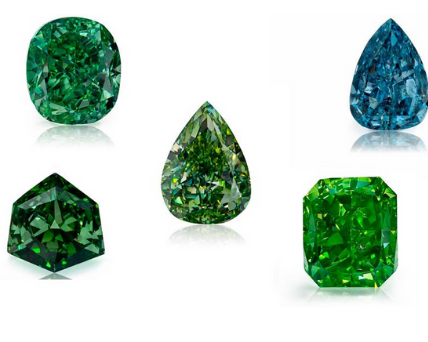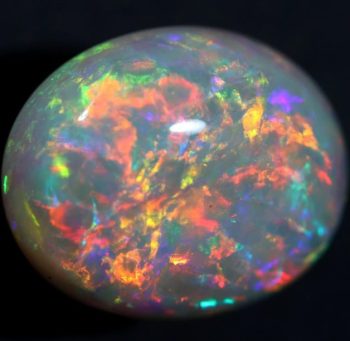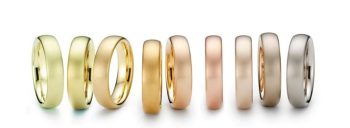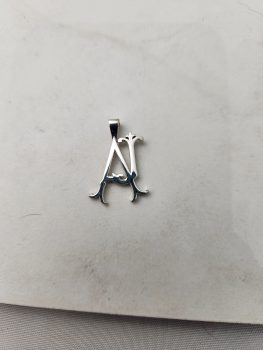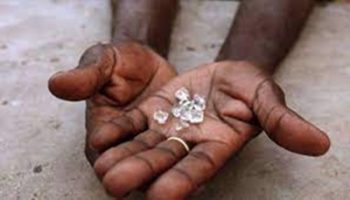Green Diamonds are not even the first or second rarest color of diamond. Those designations go to red and blue diamonds. There are only around 30 naturally red diamonds in the world, so it would make sense that you had never seen one. Green is actually one of the more common colors. But you rarely see them as well because all naturally colored diamonds are far more rare than the white ones you see in jewelry. To be honest, we have never dealt with a green diamond. But we would love to. In this blog, we will discuss the formations, characteristics, and challenges that green diamonds face.
The History Of Green Diamonds
Green diamond has a fascinating history that spans centuries. These rare gems are known for their vibrant green color, which is caused by the presence of natural radiation. The first recorded green diamond was found in India, and since then, they have been found in various locations around the world. The first recorded mention of a green diamond dates back to the 17th century, when a green diamond was gifted to the French King Louis XIV. Since then, green diamond has been treasured by royalty and collectors alike.
In recent years, green diamond has gained popularity among celebrities and jewelry enthusiasts. These unique gemstones are often used as centerpieces in engagement rings and other fine jewelry pieces. The natural green color of these stones adds a touch of elegance and individuality to any piece of jewelry. As demand for green diamonds continues to grow, their value and allure only increase.
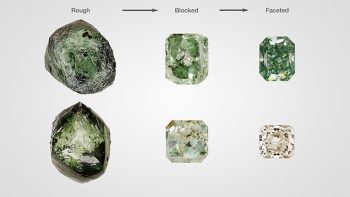
How Are They Formed?
Green diamonds are formed through a natural process that involves the presence of certain impurities and structural defects within the diamond crystal lattice. These impurities can include traces of nitrogen, hydrogen, or even radiation-induced defects. The presence of these impurities causes the diamond to absorb light in the green spectrum, giving it its distinctive color.
One common way green diamonds are formed is through exposure to natural radiation over millions of years. This radiation can come from sources such as uranium or thorium that are present in the earth’s crust. As the diamond forms deep within the earth, it can come into contact with these radioactive elements, which cause the crystal lattice to become damaged and create green color centers.
Another way green diamonds can form is through the presence of nitrogen impurities. Nitrogen is one of the most common impurities found in diamonds and can give rise to a variety of colors, including green. When nitrogen atoms are incorporated into the diamond’s crystal lattice, they can absorb light in the green spectrum, resulting in a green diamond.
Green Diamond Color Range
Green diamonds are a rare and exquisite gemstone that captivate with their unique color. The color range of green diamonds can vary from light and subtle hues to deep and intense shades. Some green diamonds have a yellowish-green color, while others have a bluish-green or even a grayish-green hue. The intensity of the green color in these diamonds is determined by the presence of natural impurities, such as nitrogen or hydrogen. The more intense the green color, the rarer and more valuable the diamond becomes.
When it comes to grading green diamonds, the Gemological Institute of America (GIA) uses a color grading scale that ranges from faint green to fancy vivid green. The faint green diamonds have a very light green color that is barely noticeable, while the fancy vivid green diamonds have a vibrant and intense green color that is highly sought after by collectors and enthusiasts.
Green diamonds can be found in various shapes and sizes, making them suitable for a wide range of jewelry designs. From solitaire rings to elaborate necklaces, green diamonds can add a touch of elegance and uniqueness to any piece of jewelry. Whether you’re looking for a subtle and delicate green diamond or a bold and vibrant one, there is a wide range of options available to suit your personal style and preferences.
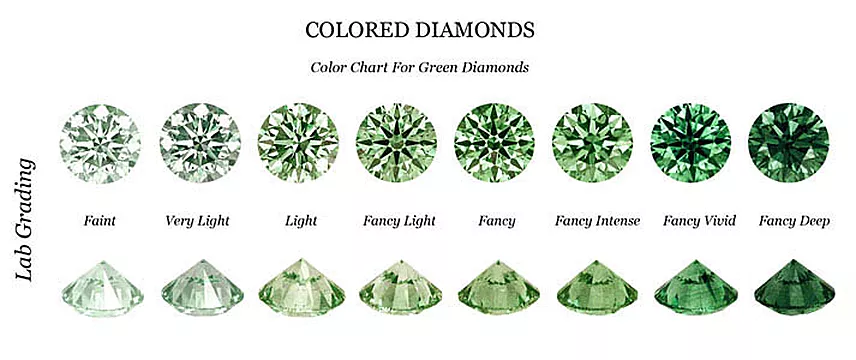
Why Green Diamonds Are Adored By Collectors
Green diamonds have become highly sought after by collectors for their unique and captivating beauty. These rare gemstones are admired for their vibrant green color. This is caused by the presence of natural radiation during their formation process. The intense hue of a green diamond ranges from light and subtle to deep and vivid, making each stone truly one-of-a-kind. Collectors are drawn to the rarity and exclusivity of green diamond, as they are significantly less common than traditional white diamonds. The scarcity of green diamond colors adds to their appeal and makes them highly desirable among collectors worldwide.
In addition to their rarity, green diamond also possess exceptional clarity and brilliance. The internal structure of these gemstones allows light to pass through and reflect off their facets, creating a stunning display of sparkle and fire. The clarity of green diamonds is often enhanced by the absence of inclusions or imperfections, further enhancing their visual appeal. Collectors appreciate the high quality and exceptional beauty of a green diamond, making them a valuable addition to any collection.
Furthermore, green diamonds have a rich history and cultural significance. Throughout the centuries, green gemstones have been associated with wealth, prosperity, and good fortune. In many cultures, green is considered a symbol of growth, renewal, and harmony. The allure of a green diamond lies not only in their physical beauty, but also in the symbolism and meaning behind them. Collectors are drawn to the emotional and historical significance of green diamond, as they represent a connection to nature and a sense of personal growth.
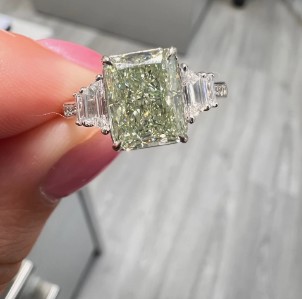
Famous Green Diamonds From History
Throughout history, several famous green diamonds have captivated the attention of collectors and gem enthusiasts alike.
One notable green diamond is the Dresden Green Diamond, which used to bey housed in the Green Vault museum in Dresden, Germany. This diamond weighs 41 carats and is known for its intense green color. It was originally cut in India in the 18th century and has since been set in various pieces of jewelry, including a hat ornament and a necklace.
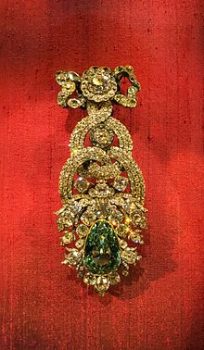
Another famous green diamond is the Ocean Dream Diamond. It is currently on display at the Smithsonian National Museum of Natural History in Washington, D.C. This diamond weighs 5.51 carats and is unique for its blue-green color. It was discovered in Central Africa in the 1980s and was later cut into its distinctive trillion shape.
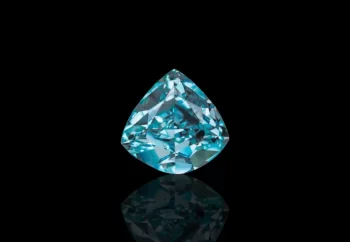
Lastly, the Moussaieff Green Diamond is a remarkable green diamond that weighs 5.11 carats. This diamond is known for its vivid green color and flawless clarity. It has been featured in several high-profile exhibitions. it is also considered one of the most valuable green diamonds in the world.
The Dresden Midnight Heist
The Dresden Midnight Heist was a daring burglary that took place in the city of Dresden, Germany, on the night of November 25, 2019. The heist targeted the Green Vault, a world-renowned museum that houses a vast collection of priceless treasures, including jewels, gold, and other precious objects. The thieves managed to break into the museum by cutting through a window and disabling the alarm system. Once inside, they quickly made their way to the Jewel Room. Then then used an ax to break into the display cases and steal several valuable items. Despite the efforts of the police, the perpetrators managed to escape with their loot, leaving behind a scene of chaos and disbelief. The Dresden Midnight Heist remains one of the most audacious and high-profile art thefts in recent history.
The Dresden Green Diamond, a rare and valuable gem, was the target of a daring midnight heist. The thieves managed to bypass the intricate security system and make off with the precious jewel. The diamond, known for its vibrant green color and historical significance, is now the subject of an intense investigation.
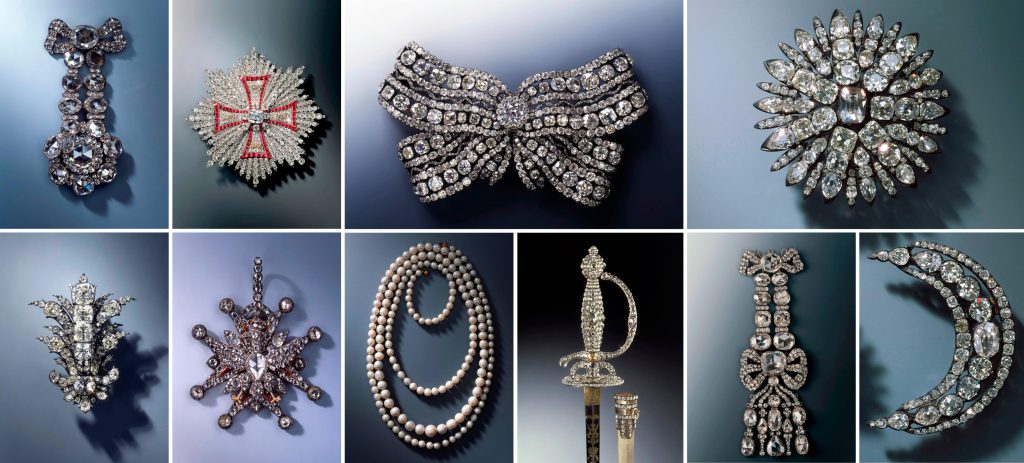
What Does Green Diamond Cost?
Green diamond boasts unique color, ranging from pale green to deep forest green. This sets them apart from traditional white diamonds. Due to their rarity, green diamonds can be quite expensive. The cost of a green diamond depends on several factors, including the size, color intensity, and clarity of the stone. On average, a one-carat green diamond can range in price from $20,000 to $50,000. However, larger or more vividly colored green diamonds can command prices well into the six-figure range. If you are considering purchasing a green diamond, it is recommended to consult with a reputable gem dealer who specializes in colored diamonds. This will ensure you are getting the best value for your investment.
Lab Irradiated Diamonds
Lab irradiated diamonds are diamonds that have undergone a process called irradiation in a laboratory setting. This process involves exposing the diamonds to high-energy radiation, such as gamma rays or electron beams. This serves to alter their color. The radiation causes changes in the crystal lattice structure of the diamonds. This results in the introduction of impurities or color centers that give the diamonds their desired color.
One of the main reasons for irradiating diamonds in a lab is to enhance their color. This process can turn a lower-grade diamond into a more valuable and desirable gemstone by changing its color to a more vibrant hue. For example, a yellowish diamond can be irradiated to transform its color into a vivid blue or green. This allows consumers to have access to a wider range of colored diamonds without the astronomical price tag associated with naturally colored diamonds.
It is important to note that lab irradiated diamonds are distinct from natural colored diamonds. While natural colored diamonds are prized for their rarity and unique color origins, lab irradiated diamonds are created through a controlled and reproducible process. Lab irradiated diamonds are still genuine diamonds. However, their color is a result of human intervention rather than natural geological processes. These diamonds can offer an affordable alternative for those who desire a specific colored diamond without breaking the bank.
Why Green Diamond Faces A Challenge In Today’s Market
Green diamond, with its unique and captivating hue, face a challenge in today’s jewelry market. Despite their beauty, these rare gemstones struggle to find a place among the more traditional and sought-after diamonds. The main reason for this is the limited supply of green diamonds compared to their colorless counterparts. The scarcity of these gems makes them more expensive and less accessible to the average consumer.
Another obstacle green diamonds face is the lack of awareness and understanding among consumers. Many people are unaware of the existence of green diamonds or the significance of their color. The majority of consumers still associate diamonds with the classic white or colorless variety. This makes it difficult for green diamonds to gain traction in the market.
Furthermore, green diamonds often face challenges in terms of marketing and branding. Unlike other colored diamonds, such as pink or blue, green diamonds do not have a widely recognized and established identity. This makes it challenging for jewelers and retailers to effectively market and promote green diamonds to potential buyers.
